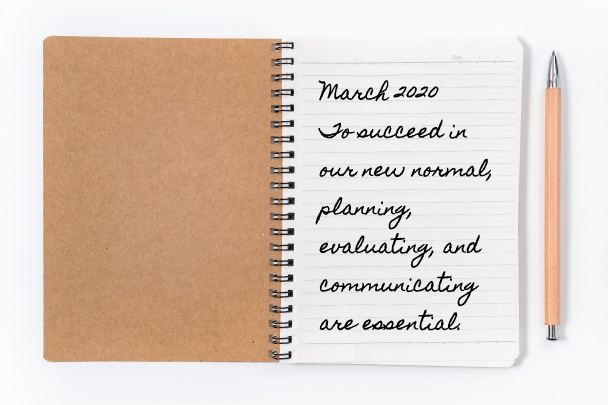March 2020
COVID-19 & Remote Work
As we face the new workforce challenges presented by Coronavirus (COVD19), my heart and thoughts are with all who have been impacted. While coping with this unprecedented event, know that we are here to support your workforce by guiding safe, informed decisions that support the continued success of your business and the people supporting it. To succeed in our new normal, planning, evaluating, and communicating are essential.
Plan
Survey your staff to understand what is needed for them to be productive in a work from home environment. When it comes to process and equipment that’s required to complete daily tasks, your employees have a great deal of insight to share. It’s important to fully understand all operational requests prior to moving your workforce to a remote work environment. Proactive planning allows you the opportunity to procure supplementary tools and develop checklists to ensure individual preparedness. To be fully prepared, initiate a trial day where employees rotate between working in an office environment and working remotely.
Evaluate
Evaluate the information you garner from employees during their remote work trial period. Then, get ahead of IT and operational challenges by making necessary changes. Ensuring readiness tools are not only in place but are also working properly, will support business continuity when moving employees to their new work environment. All changes should be completed prior to moving any job function to remote work. Update your Standard Operating Procedures, have managers review them in detail with their teams and have each employee acknowledge their understanding of the new policies. Employees working outside of a normal office environment can grow autonomy that will persevere beyond this temporary period.
Communicate
It’s critical to ensure your business stays connected and functional when moving employees away from their normal working environment. So, speak openly with your staff and keep the conversation going. Providing guidelines that establish a clear framework of expectations can help ready your employees to stay productive and professional while working remotely. If you don’t already have an emergency preparedness project team, consider building one. Keeping employees feeling safe and comfortable during a stressful time is also key is key to business continuity. Share an emergency phone line for texts and calls that is available before, during and after normal working hours.
Now is the time for your business to make room for new ideas, modern policies and optimized procedures. With fewer workplace distractions, you may discover you are growing more innovation!











